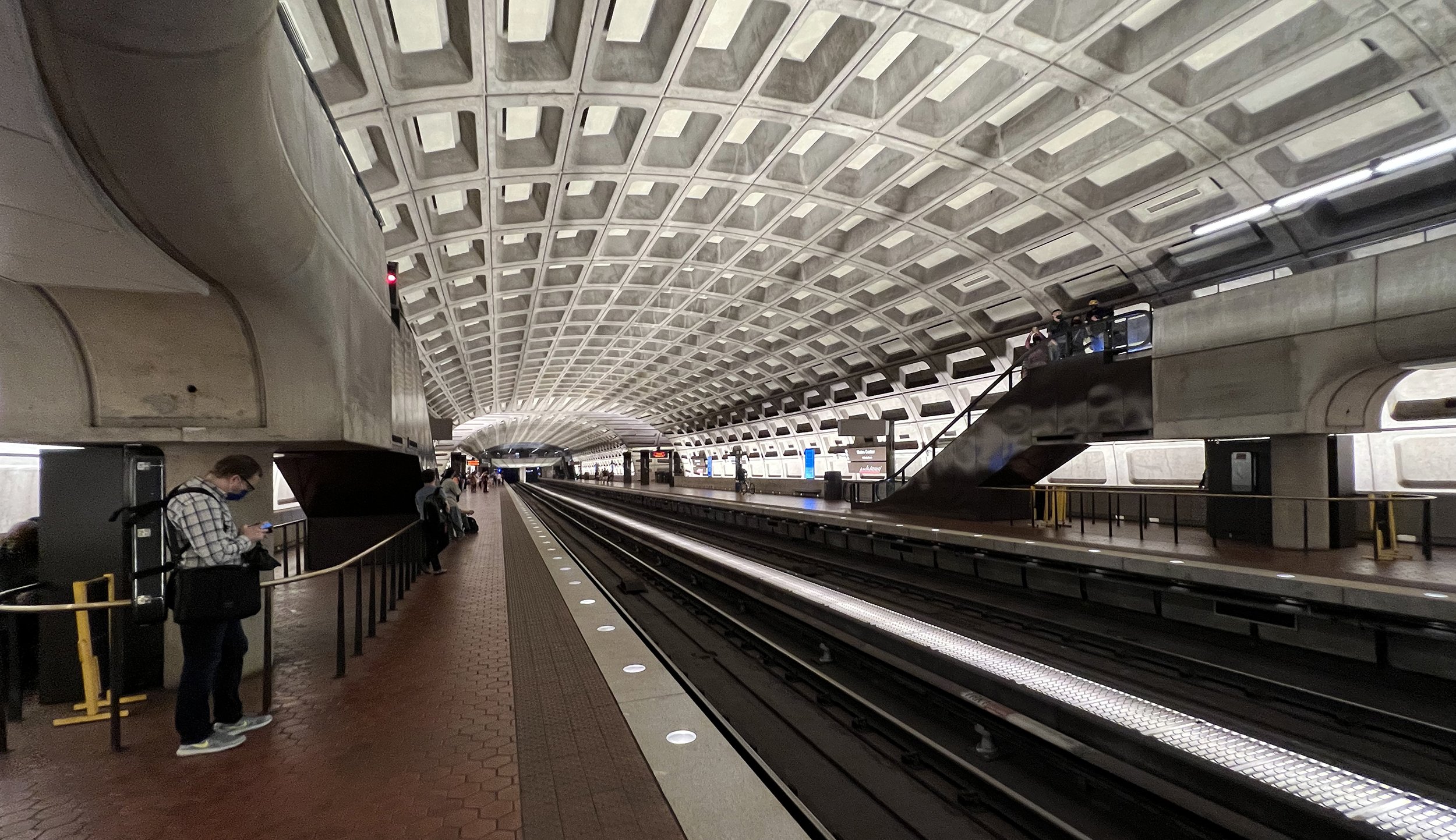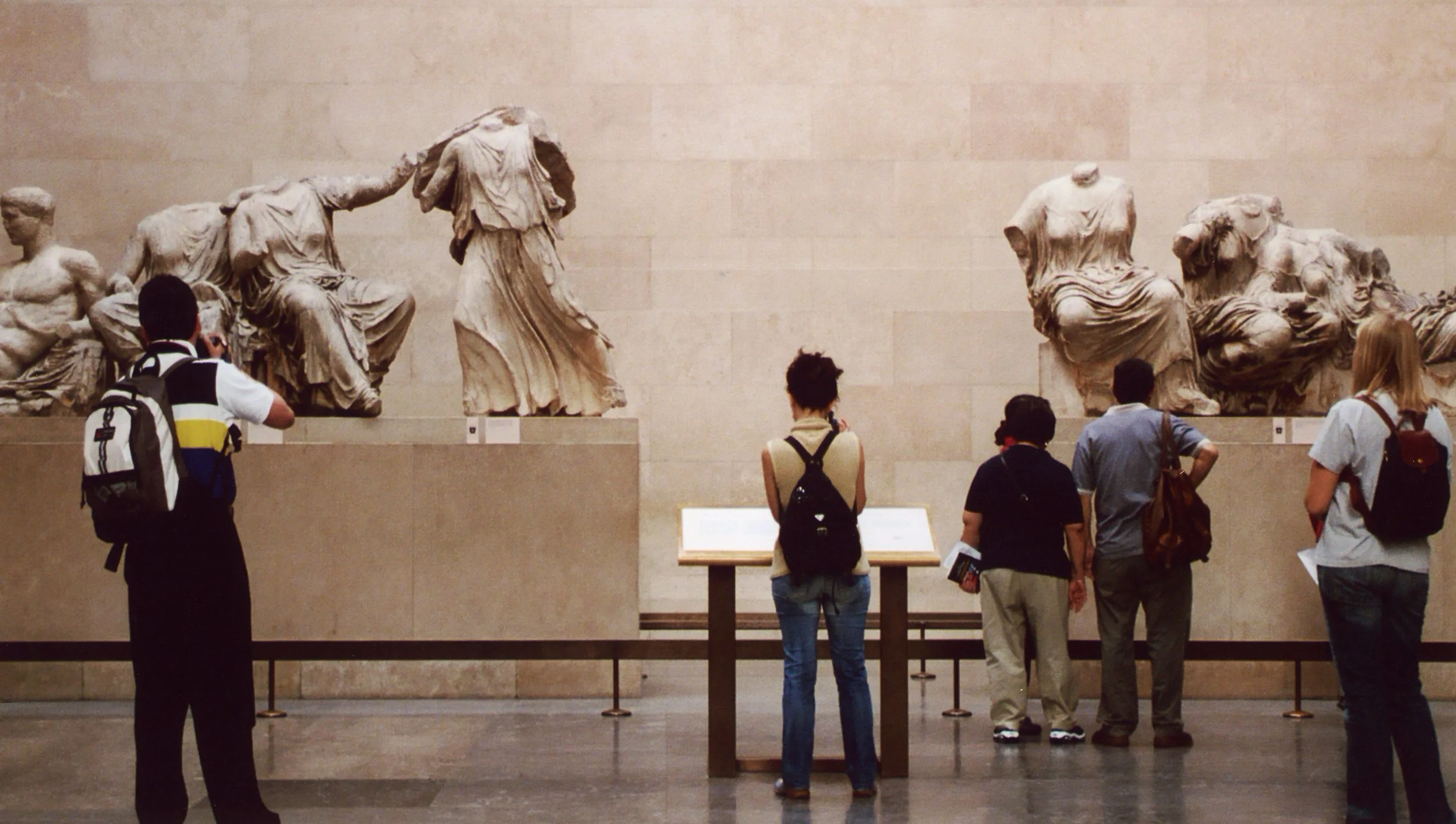
Page 5 of 5
London, England
Yes I'm winning, spinning, I feel energy being pulled up from all sides
Sir Norman Foster sure does get around. Foster's popularity in his hometown is well deserved, each of the projects are well done, each are different (despite an common vocabulary), each are memorable. This one certainly is.
This is the brand new center court of the British Museum, a glass covered plaza surrounding the historic reading room and redefining the entire museum.
The new room is a big room, a really big room. Not much happens in the new space, a few restaurants, some shops, an information desk and a few miscellaneous ancient sculptures are all that are there to keep those magnificent shadows company.
Karl Marx was here, well actually all over London- this is the room where he researched "Das Kapital," currently ranked 37,627 in Amazon's list of best sellers. This room must have been popular with all those other intellectuals and philosophers killing time in London at the turn of the century, yet every description of the room only mentions Marx. Hmmm...
The Reading Room is in the center of the Center Court, an oddly preserved relic now trapped inside Foster's big glass donut.
The Elgin Marbles are at the British Museum. Still.
The Greek Government wants them back by 2004, they're even furiously building a Bernard Tschumi designed museum in Athens in anticipation of their return. The Elgin Marbles were taken by minions of Lord Elgin directly from the pediment of the Parthenon back in those arrogant British Empire days. Even after all this time the British Government wants to keep them claiming that their rightful owners can't take care of them and that they are safer on Great Russell Street.
The booty of a once ruthless empire creates a damn fine museum. Artifacts stolen (or simply acquired) from virtually every once great culture. The Elgin Marbles, the Rosetta Stone, glimpses of Egypt, Assyria, Rome, even ancient Britain itself. The museum is also a visitor's paradise- you can take pictures of anything (even with a flash), it's free, you can bring in a backpack, there's no metal detectors and they even let you touch (some of) the collection.
It's almost hard to believe that this is the last image of a Sir Norman Foster building of the slideshow. Sir Norman was all over London and its Open House weekend event, with no fewer than five of his recently completed buildings open to an insatiable public. The Foster and Partners offices (south of South Kensington) were even open, complete with models and renderings and overworked employees, completely focused on their dual screen flat IBM monitors. Learn more about Sir Norman, including his plans for a US invasion with multiple projects underway including the Boston Museum of Fine Arts, the Hearst Tower (now under construction on 8th Avenue), Avery Fisher Hall and now the World Trade Center.
Sir Richard Rogers groundbreaking headquarters for Lloyd's of London on Lime Street in the City has been confusing locals since it opened in 1984. Much like the Pompidou Center, the Lloyd's building pushes its services to the outside to create large, usable interiors. The result is a menacing exterior but not menacing enough to scare away the large crowds on Open House weekend.
Lloyd's was the first thing I wanted to see during the 2003 London Open House weekend event. As far back as my first visit in December 1995 I had made a pilgrimage to see this building, always wondering what it was like inside- by 1995 it had long since closed to visitors, its security staff scared by that looming and constant IRA threat, with a stream of steady threats to follow ever since. On that Saturday I woke up way too early in Paris to catch the first (or second) Eurostar train out to London, then waited to pass through the stressed but friendly British customs agents, then a tube ride, checked in to my hotel, then another tube ride only to find another hour wait just to get inside. All that time wasted, still once inside it felt like time well spent.
This is the Lutine Bell inside Lloyd's central atrium. Traditionally it was rung every time a ship sank, a horrible event but even more horrible to the insurance agents inside who now actually had to pay out on some of those claims.
Another view inside the main floor, surprisingly light considering its fortress appearance outside.
If you were in London with me on that cold, spit spotty December day and not sure what you were looking at, then its possible that images of Lloyd's of London may seem somewhat familiar. To put it in context you need to start at Tower Bridge, home of that fateful decision between shopping in South Kensington or walking for a half hour in the cold through traffic to see something promised to be like nothing else. Your first view was probably like the first bonus slide, a towering, acontextural monster hovering over such solid, unmemorable buildings. Still to this day you probably question your decision, occasionally wondering whether the road chosen was a road worth choosing, whether or not South Kensington may have been the better choice after all.
If you weren't in London on that cold, spit spotty December day, then, well, never mind.
Sunday night all the lights of London shining, sky is fading red to blue.
One last picture as the very last night of summer falls into memory, all seen through the glass of a small capsule that is always moving, always...











